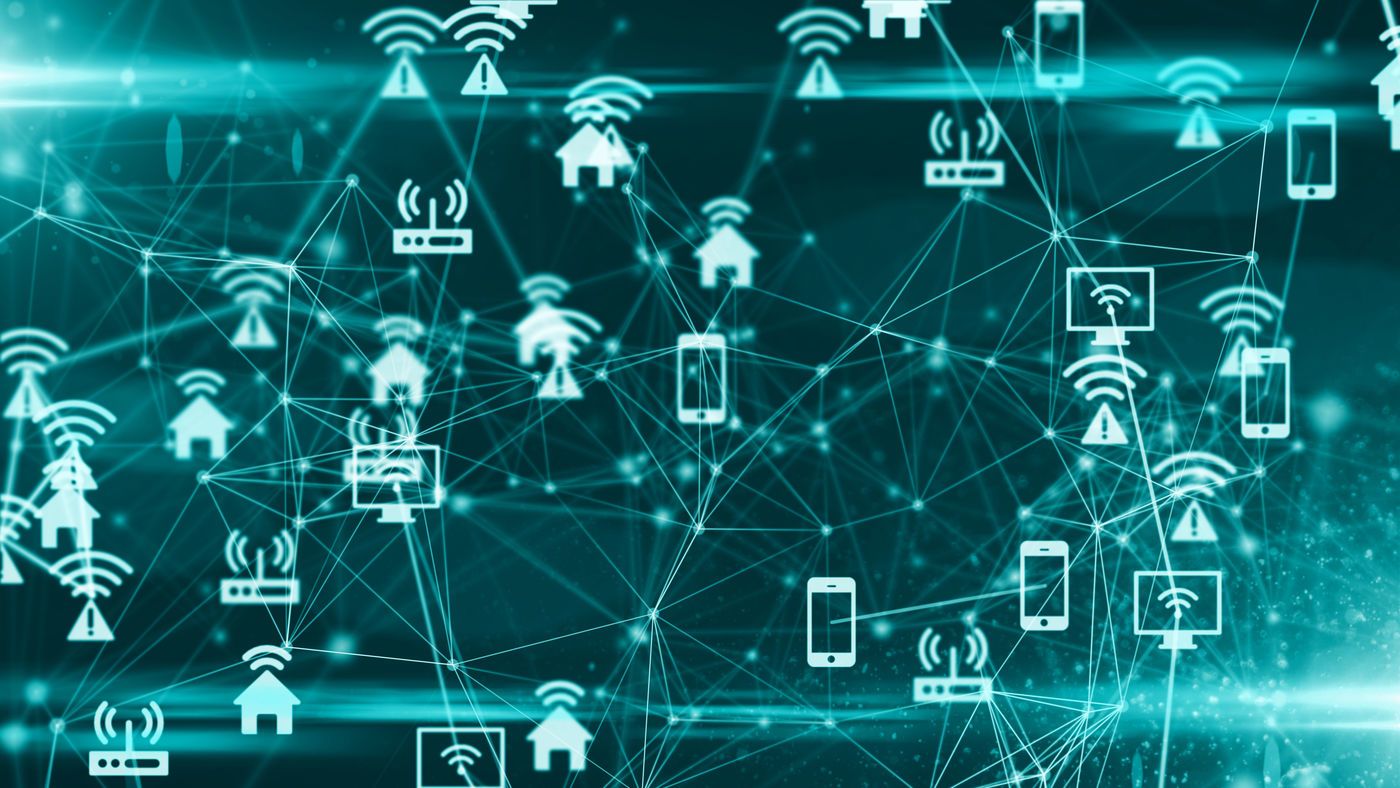Blockchain and the Internet of Things (IoT): A Perfect Match

- Understanding the Basics of Blockchain Technology
- The Rise of the Internet of Things (IoT)
- Exploring the Potential of Blockchain in IoT
- Challenges and Opportunities in Integrating Blockchain and IoT
- Real-world Applications of Blockchain and IoT
- The Future of Connected Devices with Blockchain Technology
Understanding the Basics of Blockchain Technology
Blockchain technology is a decentralized, distributed ledger system that securely records transactions across a network of computers. Each transaction is stored in a “block” that is linked to the previous block, forming a chain of blocks – hence the name “blockchain.” This technology ensures transparency, security, and immutability of data, making it an ideal solution for various industries, including finance, healthcare, supply chain, and more.
One of the key features of blockchain technology is its ability to create a tamper-proof record of transactions. Once a block is added to the chain, it cannot be altered without changing all subsequent blocks, making it nearly impossible to manipulate the data. This feature is particularly valuable in industries where data integrity is crucial, such as in supply chain management or healthcare.
Another important aspect of blockchain technology is its decentralized nature. Unlike traditional centralized systems, where a single entity controls the data, blockchain operates on a peer-to-peer network where all participants have equal access to the information. This not only enhances security but also promotes trust among users, as there is no need to rely on a central authority to verify transactions.
Blockchain technology also offers smart contracts, which are self-executing contracts with the terms of the agreement directly written into code. These contracts automatically execute when predefined conditions are met, eliminating the need for intermediaries and streamlining processes. Smart contracts can be particularly beneficial in IoT applications, where devices need to interact autonomously based on predefined rules.
In conclusion, blockchain technology provides a secure, transparent, and decentralized way to record transactions and data. Its ability to create tamper-proof records, operate on a peer-to-peer network, and execute smart contracts makes it a perfect match for IoT applications. By leveraging blockchain technology, businesses can enhance the security, efficiency, and trustworthiness of their IoT networks, paving the way for a more connected and automated future.
The Rise of the Internet of Things (IoT)
The rise of the Internet of Things (IoT) has revolutionized the way we interact with technology in our daily lives. IoT refers to the network of physical devices embedded with sensors, software, and other technologies that enable them to connect and exchange data with other devices and systems over the internet.
This interconnected web of devices has led to a significant increase in the amount of data being generated and shared. From smart home devices like thermostats and security cameras to wearable fitness trackers and industrial machinery, IoT has permeated nearly every aspect of our lives.
As more and more devices become connected to the internet, the need for secure and efficient data management has become paramount. This is where blockchain technology comes into play. Blockchain, a decentralized and distributed ledger system, offers a secure and transparent way to record transactions and track the flow of data.
By combining blockchain with IoT, we can create a more secure and efficient system for managing the vast amounts of data being generated by connected devices. This partnership between blockchain and IoT has the potential to revolutionize industries such as healthcare, supply chain management, and energy distribution.
Overall, the rise of IoT has paved the way for a more interconnected and data-driven world. By leveraging the power of blockchain technology, we can ensure that this data is secure, transparent, and tamper-proof, leading to a more efficient and trustworthy IoT ecosystem.
Exploring the Potential of Blockchain in IoT
Exploring the potential of blockchain in IoT opens up a world of possibilities for enhancing security, transparency, and efficiency in interconnected devices. By leveraging the decentralized nature of blockchain technology, IoT devices can securely communicate and transact with each other without the need for a central authority. This not only reduces the risk of data breaches and tampering but also streamlines processes and reduces costs.
One of the key benefits of integrating blockchain with IoT is the ability to create immutable records of device interactions and transactions. This ensures that data is securely stored and can be verified at any point in the future, providing a high level of trust and transparency. Additionally, blockchain can enable automated smart contracts between IoT devices, allowing for seamless and secure transactions without human intervention.
Furthermore, blockchain technology can help address the scalability challenges of IoT by providing a distributed network for managing and processing data. This can improve the overall performance of IoT systems and enable real-time data processing and analysis. With blockchain, IoT devices can securely share data with authorized parties while maintaining data integrity and privacy.
Challenges and Opportunities in Integrating Blockchain and IoT
Integrating blockchain and IoT presents both challenges and opportunities for businesses looking to leverage these technologies. One of the main challenges is the complexity of integrating two cutting-edge technologies that have different architectures and requirements. However, overcoming this challenge can lead to significant opportunities for increased security, transparency, and efficiency in various industries.
One of the key challenges in integrating blockchain and IoT is ensuring interoperability between devices and networks. This requires developing standards and protocols that allow different devices to communicate securely and seamlessly. Additionally, scalability is a major concern as the number of IoT devices continues to grow exponentially, putting pressure on blockchain networks to handle large volumes of transactions.
On the other hand, the integration of blockchain and IoT opens up new opportunities for businesses to create innovative solutions that can revolutionize industries such as supply chain management, healthcare, and smart cities. By combining the immutability and transparency of blockchain with the real-time data collection of IoT devices, companies can improve traceability, automate processes, and enhance decision-making.
Real-world Applications of Blockchain and IoT
Blockchain and IoT have numerous real-world applications that showcase the synergy between these two technologies. By combining the decentralized and secure nature of blockchain with the connectivity and data-sharing capabilities of IoT devices, innovative solutions are being developed across various industries.
- Supply Chain Management: Blockchain can be used to track the movement of goods through the supply chain, ensuring transparency and authenticity. IoT devices such as sensors can provide real-time data on the location and condition of products, further enhancing visibility.
- Smart Contracts: IoT devices can trigger smart contracts on the blockchain based on predefined conditions. This automation streamlines processes such as payments, maintenance, and data sharing, reducing the need for intermediaries.
- Asset Tracking: Blockchain combined with IoT enables efficient tracking of assets such as vehicles, equipment, and inventory. This can help prevent theft, optimize resource allocation, and improve overall operational efficiency.
- Healthcare: In the healthcare industry, blockchain and IoT can be used to securely store and share patient data, track medical devices, and monitor patient health remotely. This can lead to improved patient outcomes and streamlined healthcare processes.
- Energy Management: IoT devices connected to a blockchain network can facilitate energy trading, monitor energy consumption, and optimize energy distribution. This can promote sustainability, reduce costs, and increase energy efficiency.
Overall, the combination of blockchain and IoT opens up a world of possibilities for creating innovative solutions that address complex challenges in various sectors. As these technologies continue to evolve and mature, we can expect to see even more impactful applications that transform industries and improve the way we interact with the world around us.
The Future of Connected Devices with Blockchain Technology
The integration of blockchain technology with connected devices is poised to revolutionize the way we interact with the Internet of Things (IoT). By leveraging the decentralized and secure nature of blockchain, IoT devices can communicate and transact with each other autonomously, without the need for intermediaries. This opens up a world of possibilities for smart homes, smart cities, and industrial IoT applications.
One of the key benefits of using blockchain in connected devices is enhanced security. With blockchain’s cryptographic algorithms and distributed ledger system, data transmitted between IoT devices is encrypted and tamper-proof. This ensures that sensitive information such as personal data, financial transactions, and device commands are protected from unauthorized access or manipulation.
Another advantage of combining blockchain with IoT is increased transparency and trust. The immutable nature of blockchain ensures that all transactions and interactions between devices are recorded on a transparent and verifiable ledger. This transparency builds trust among users, as they can track the history of data exchanges and verify the authenticity of information.
Moreover, blockchain technology enables the creation of smart contracts, which are self-executing contracts with the terms of the agreement directly written into code. These smart contracts can automate processes, trigger actions based on predefined conditions, and facilitate secure and seamless transactions between IoT devices. This eliminates the need for manual intervention and reduces the risk of errors or fraud.
In conclusion, the future of connected devices with blockchain technology is bright. By combining the security, transparency, and automation capabilities of blockchain with the vast network of IoT devices, we can create a more efficient, secure, and trustworthy ecosystem for the Internet of Things. This synergy between blockchain and IoT has the potential to transform industries, improve user experiences, and drive innovation in the digital age.



